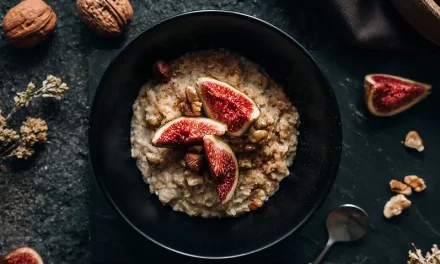Shatavari (lat.: Asparagus racemosus) is one of the best-known plants of Ayurvedic herbal medicine (Dravyaguna) in Europe. Translated meaningfully, Shatavari means: “which has over 100 men” – a clear indication of the rejuvenating effect of this plant on the female reproductive organs.
Botany
This type of asparagus grows all over India, even in higher regions up to over 1400 metres. It is mostly the fine roots of this wild asparagus that are used in various ways as a healing and tonic agent in Ayurveda.
Shatavari is a small, thorny bush with a tendency to climb, with a rootstock consisting of many roots 30-100 cm long and up to 2 cm thick. The leaves resemble soft needles and the flowers are white. They develop into red berries that contain a seed.
Ayurvedic classification of the properties and effects of Shatavari
- Parts of the plant used: Roots and leaves; active ingredients are mainly: sarsapogenin, saponins, quercetin, rutin, hyperoside, diosgenin, sitosterol, stigmasterol, shatavarin, asparagamin, disaccharide.
- Dosha: Vata and Pitta are reduced
- Rasa (taste): sweet and bitter
- Guna (property): heavy and oily
- Vipaka (effect after digestion): sweet
- Virya (potency): cooling
Shatavari is one of the most significant plants for women in Ayurveda. It is used to support fertility, increase libido, support during pregnancy and for menopausal complaints. It is known to purify the blood and strengthen the shukra-dhatu, the reproductive tissue. Shatavari also has a positive effect on sexuality in men. It can be used effectively for impotence, sexual weakness and inflammation in the genital area. Some other potential indications are:
- Pain relief
- Help with anxiety disorders
- Digestive support
- Strengthening the immune system
- Relief of premenstrual syndrome (PMS)
- Calming the bowels in cases of diarrhoea caused by Pitta
- Reducing inflammation in bronchitis
- Soothing of the stomach mucous membranes in hyperacidity and stomach ulcers
- Pitta-induced constipation
- Nerve weakness
Pharmacological properties: vermicidal, antineoplastic, antidysenteric, antifungal, stomachic, antibacterial, antiviral, diuretic, lactic, antiamoebic, hypoglycaemic, phagocytic, hypotonic and enzymatic.
Studies on Shatavari
Regarding the widespread prejudice of weight gain and tumour growth-promoting effect from taking Shatavari, the Vignan Institute of Pharmaceutical Sciences, Deshmukhi, Nalgonda in Andhra Pradesh, India has conducted studies with interesting results:
The rate of breast cancer is lower in association with regular intake of phytoestrogens found in Shatavari. On the other hand, in contrary studies on the connection between phytoestrogens and the development of breast cancer, no connection could be found. Trials rather indicated a growth-inhibiting effect on breast carcinomas.
With regard to weight gain, it has been found that shatavari reduces menopausal weight gain by 50 % and that, if taken in good doses, there is no other increase in body weight to fear. Other scientific studies have investigated the effect of Shatavari on a wide range of diseases.
Known Ayurvedic formulations with Shatavari and their dosage
Recipes: Narayana tailam, Shatavaryadi gritam (Shatavari ghee), Shatavari kalp, Guduchyadi tailam, Phala gritam. Different dosages of Shatavari.
Preparations in Ayurveda
Pressed juice: 10-20 ml
Decoction: 50-100 ml
Powder: 3-6 g
Shatavari Gritham: 15-20 ml daily
Forms of intake: The powder is administered mixed with honey, milk or ghee. Or: One teaspoon of powder (Shatavari Churna) is boiled in 200 ml of milk for 5-7 minutes and then drunk. In case of severe dryness, a teaspoon of ghee and Sharkara (product of Amla Natur GmbH) (Ayurvedic cane sugar) can be added. Shatavari is an extremely versatile root that is used as a tonic and rejuvenator and also as a medicinal plant. Moreover, Shatavari not only grows wild, but is also cultivated in organic farming and is therefore not considered endangered.
Duodenal ulcer
Clinical studies have shown a positive influence of shatavari on duodenal ulcers.
Antibacterial effect
Against Escherichiacoli, Shigella dysenteriae, Shigella sonnei, Shigella flexneri, Vibrio cholerae, Salmonella typhi, Salmonella typhimurium, Pseudomonas putida, Bacillus subtilis and Staphylococcus aureus could be detected in tests with methanol extracts of Shatavari. These tests were carried out in vitro.
Lactic effect
The intake of Asparagus racemosus showed a significant increase in milk production in nursing mothers.
Regulating the immune system
Shatavari showed a similar immunostimulant effect as lithium and glucan in studies.
Effect with stress
From experiments it can be concluded that Asparagus racemosus has a slight stress-reducing effect. However, it seems to have less of an effect than other herbal remedies such as ashvagandha or ginseng.
Gastric ulcers
In trials, Shatavari was shown to be effective against stress-induced ulcers. Asparagus racemosus significantly reduced the excretion of gastric acid. The protective effect was dose-dependent, but the effect on alcohol-induced ulcers was lower at all doses.
Side effects of Shatavari
Shatavari is generally considered safe. People who are allergic to Asparagus officinalis will probably also be allergic to Asparagus
racemosus and should therefore refrain from taking it. In their use as a medicinal plant, however, the asparagus species are not the same.

Issue 50 – Healthy Skin
This issue is not longer available.

 © DykyoStudio / Thinkstock
© DykyoStudio / Thinkstock 














